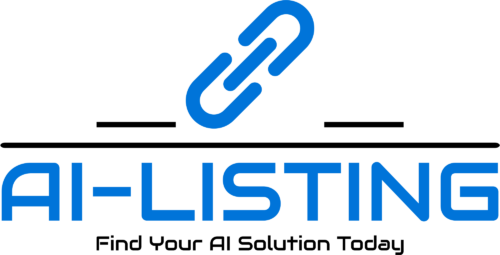What is Artificial Intelligence and
what can you do with it?
What are artificial intelligence tools
Artificial intelligence tools are software programs that use artificial intelligence (AI) to perform tasks that would normally be done by humans. This could include things like recognizing faces in photos, predicting sales results, or automatically answering questions on a website. By using these tools, businesses can work more efficiently and automate processes, freeing up time for other important tasks.
Artificial intelligence (AI) is a technology that allows computers and machines to learn and make decisions based on data. This is made possible by advanced algorithms and machine learning techniques.
In practice, this means that Artificial intelligence can be used to solve complex problems and discover patterns in data that cannot be perceived by human eyes. Some examples of applications of AI include:
- Predictive analytics: Companies can use Artificial intelligence
to analyze data and discover patterns that can help them predict future events, such as future sales or customer behavior. - Image recognition: Artificial intelligence can be used to analyze images and identify objects, faces, and other details.
- Speech recognition: Artificial intelligence is used in speech technologies such as speech assistants to recognize and understand human language.
- Self-driving cars: Artificial intelligence is used in the development of self-driving cars to analyze the environment and make decisions based on what they see.
- Robotics: Artificial intelligence is used in the development of robots that are capable of performing tasks that were previously only performed by humans, such as sorting packages in a warehouse.
In short, Artificial intelligence is a very powerful technology that can help us solve complex problems and make our daily lives easier. The applications of AI are far from exhausted, and we can expect to see many more exciting applications in the future.
How to compare artificial intelligence tools
Comparing Artificial intelligence tools can be a challenging task because there are many factors to consider. Here are some suggestions on how to compare these tools:
1. Functionality: Make sure you understand what the Artificial intelligence
tool does and what features it offers. Compare the features of different tools and see if they match your needs.
2. User-friendliness: Test different Artificial intelligence
tools and see which ones are the easiest to use. Also, check if the tool has an intuitive interface and if the documentation is clear.
3. Performance: Check the performance of the Artificial intelligence
tool by looking at how quickly it can perform tasks and how accurate the results are.
4. Integration: Look at the integration capabilities of the tool with other software you use. A tool that integrates well with other software can significantly improve your workflow.
5. Price: Compare the costs of different tools and determine which tool fits your budget best.
6. Support: Look at the customer support provided by the tool provider and ensure that there is sufficient support available if you need help.
By considering these factors and comparing between different Artificial intelligence
tools, you can make an informed decision about which tool is best suited for your needs.
How to use Artificial Intelligence tools
UsingArtificial intelligence tools depends on the specific program and task you want to perform. However, there are some general steps you can follow:
1. Find an Artificial intelligence tool that fits the task you want to perform. There are many different
Artificial intelligence tools available, so make sure to find one that suits your specific needs.
2. Install the Artificial intelligence tool on your computer or create an account on a cloud-based platform, depending on the program’s requirements.
3. Learn how to use the Artificial intelligence tool. Many
Artificial intelligence tools have a user manual or tutorials to help you learn the basics.
4. Collect the data needed to train the Artificial intelligence
tool. For some tasks, it may be necessary to have a large amount of data to train and optimize the Artificial intelligence
tool.
5. Apply the Artificial intelligence tool to the task you want to perform and evaluate the results. You may need to fine-tune the
Artificial intelligence tool to get the best results.
It’s important to remember that Artificial intelligence tools are not always the solution for every problem and should be used properly to be effective. It may also be helpful to consult an
Artificial intelligence expert if you have questions or need help using a particular Artificial intelligence
tool.
Artificial Intelligence tools – what can they be used for?
Tools for artificial intelligence can be used for various purposes depending on the needs of the user. Here are a few examples:
1: Marketing: artificial intelligence tools can be used to personalize ads, analyze customer behavior, and optimize marketing campaigns.
2: Customer service: Chatbots and virtual assistants can automatically answer customer questions and assist in problem-solving.
3: Image recognition: artificial intelligence tools can help computers recognize and classify images, such as analyzing medical images or identifying faces.
4: Natural language processing: These technologies can assist in understanding and processing human language, such as automatically generating text or translating languages.
5: Predictions and analysis: Machine learning models can be used to analyze trends and make predictions, such as in the financial sector.
These are just a few examples of how artificial intelligence
tools can be used. Essentially, the applications are almost endless and can be tailored to the specific needs of an organization or individual.
Artificial Intelligence tools categorized
For the convenience of our readers, we have categorized the artificial intelligence tools into different categories. This way, you can search for the tool that best suits your needs. We have divided the tools based on their application and what you can do with them. Below you will find an overview of the different categories we have compiled:
1:
artificial intelligence
assistant
2:
Art & Image
3:
Audio
4:
Bussines
5:
Copywriting
10:
Marketing
11:
Prompts
12:
SEO
13:
Social media
14:
Video
15:
Website & Funnel
16:
Uncategorized
